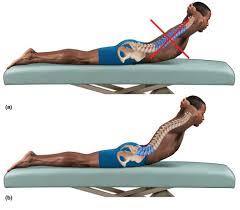Do you know according to World Health Organization, lifetime prevalence of low back pain is estimated 60-70% in adult population? The cause of the low back pain can differ from condition to condition. Good spinal health and posture are a mark of a fit and healthy body. But as it does a lot for us in our day-to-day lives, it also bears the brunt of bad postures and long sitting hours that result in a myriad of problems. These conditions can also be congenital and the treatment thus needs to be started at an early stage to restore compromised functionality and quality of life. Here, in this article, let us understand the condition called- Kyphosis.
Relevant Anatomy

Spine is the organ which supports the whole body. Alignment of spine is necessary for the normal functioning of body. The vertebrae are divided into many parts such cervical spine, thoracic spine, lumbar spine and sacrum. Thoracic spine is 40 degree convex shaped vertebrae. If due to any pathology, this increases or degrees, then it is known as Kyphotic abnormality. Postural Kyphosis is the commonest of all.
Kyphosis
Kyphosis is the curving of the spine that causes a bowing or rounding of the back, which leads to a hunched back or slouching posture. It causes an exaggerated upper back curvature leading to a bowing of the neck. There are three main types of kyphosis- Postural Kyphosis, Scheuermann’s Kyphosis, and Congenital kyphosis.
Postural kyphosis
It is the most common type of kyphosis and is more common in girls than in boys and is typically noticed in adolescence. As the name suggests it is caused by poor posture and weakening of the para-spinal muscles and ligaments in the back which are essentially responsible for holding the upper back upright. If left untreated, the condition worsens with time. Patients with these conditions will experience symptoms of pain and muscle fatigue.
Scheuermann’s kyphosis
This condition is also first noticed during the adolescence period. It is also known as Juvenile Discogenic disease. It is the result of structural deformity of vertebral bodies and discs of the spine. and it commonly develops along with scoliosis. The reasons for the occurrence of this condition are not well understood. The thoracic region of spine is seen mostly effected by it.
Congenital kyphosis
Congenital Kyphosis is the least common type of abnormal kyphosis. This rare abnormality is caused by abnormal development of the vertebrae during embryonic life. The kyphotic curvature is developed by the fusion of many vertebrae together. When failed to do so, it is known as Congenital kyphosis.
Etiology, Incidence, and risk factors
Postural kyphosis occurs as a result of poor posture which leads to weakening of muscle and ligaments causing muscular fatigue which in turn results in pain. Congenital kyphosis, though rare, occurs as a result of improper development of vertebrae or fusion of vertebrae before birth. There are other factors at play as well like- Certain endocrine disorders, Connective tissue disorders, Infection, Muscular dystrophy, Poliomyelitis, Spina bifida, tumors, etc.
Clinical features and Symptoms
In severe cases, the patient may experience difficulty in breathing due to the presentation of the spine. Patients typically experience fatigue in day-to-day activities. These activities when performed for longer duration can result in chronic back pain which can range from mild to severe. A physical therapist observes the presentation of the spine while assessing the posture of the patient. A round back with tenderness and stiffness are the clinical presentations of the condition.
Diagnostic evaluation
The physical therapist after a clinical assessment may advise one or more of the following diagnostics tests- Full spine X-ray, PFT, and or an MRI.
Complications
There are some complications that can occur as a direct or indirect result of a kyphotic back. Some of them are-decreased lung capacity, disabling pain, neurological symptoms including leg Weakening or paralysis, and a rounded back deformity.
Myths and Facts regarding Kyphosis


Treatment & Management
Treatment and management depend upon the cause of the disorder. For example, Congenital kyphosis requires corrective surgery at an early age to restore the quality of life.
Scheuermann’s disorder is treated with braces and physical therapy. Kyphosis caused by tumors will need surgical intervention and correction followed by physical therapy.
Postural Kyphosis can be corrected and managed with physical therapy and regular exercise as suggested by the physiotherapist in Gurgaon.
Physical Therapy Management can be different for various stages. It is divided into Conservative and Non-conservative Treatment. Conservative treatment includes bracing, exercises and techniques that can help in treating kyphosis. Postural improvement is one of the important aspect of the whole treatment. Alignment of spine can be treated only withe exercises and bracing. In extreme conditions, surgery may be needed.
Few Exercises that can help in Kyphosis:
- Flexibility exercises of lower limb muscles such as Hamstrings
-
 Strengthening of back extensor muscles
Strengthening of back extensor muscles

- Strengthening of Core muscles

- Proper Postural and body mechanic techniques for ADLs

- Stretching of Pectoralis muscles


